Salt Crystal Rainbow Science for Kids is a fun twist on crystal science experiments that can teach kids about ionic bonds, crystals, salt, evaporation, dissolving, super saturation, and more!
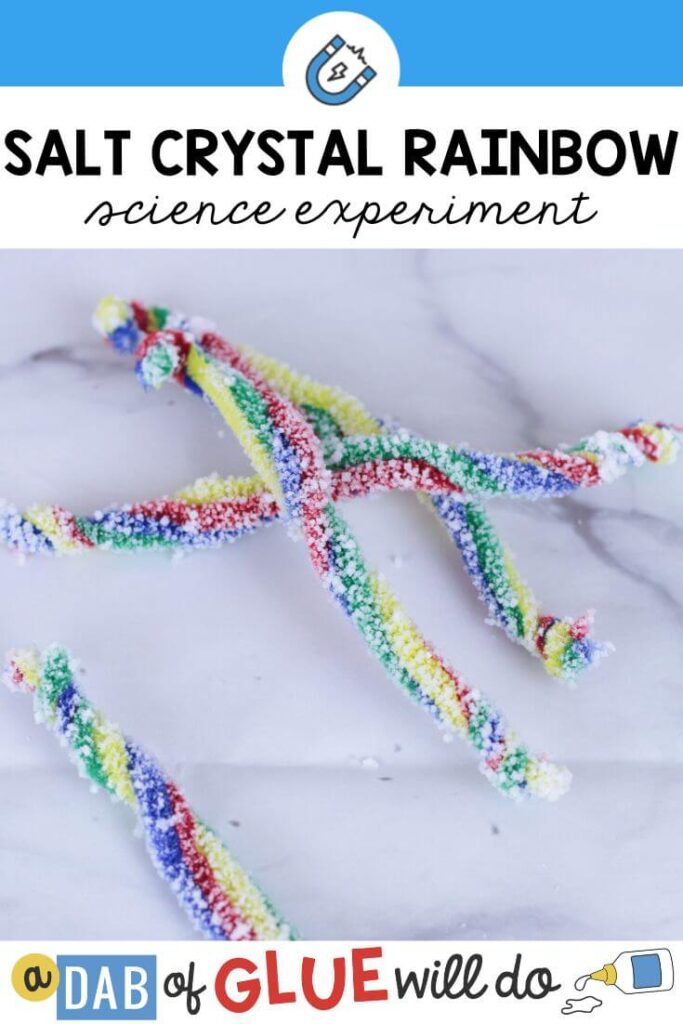
There are so many fun ways to learn with salt crystals. We always like making salt crystals because they can form in just a few hours and don’t require refrigeration. However, the longer you leave your crystals in the water, the bigger your crystals will be. We left ours in our jars for two days before pulling them out.
Getting the Salt Crystal Rainbow Science for Kids Ready
Setting this experiment up is super easy, and it takes very little advanced prep. You will need:
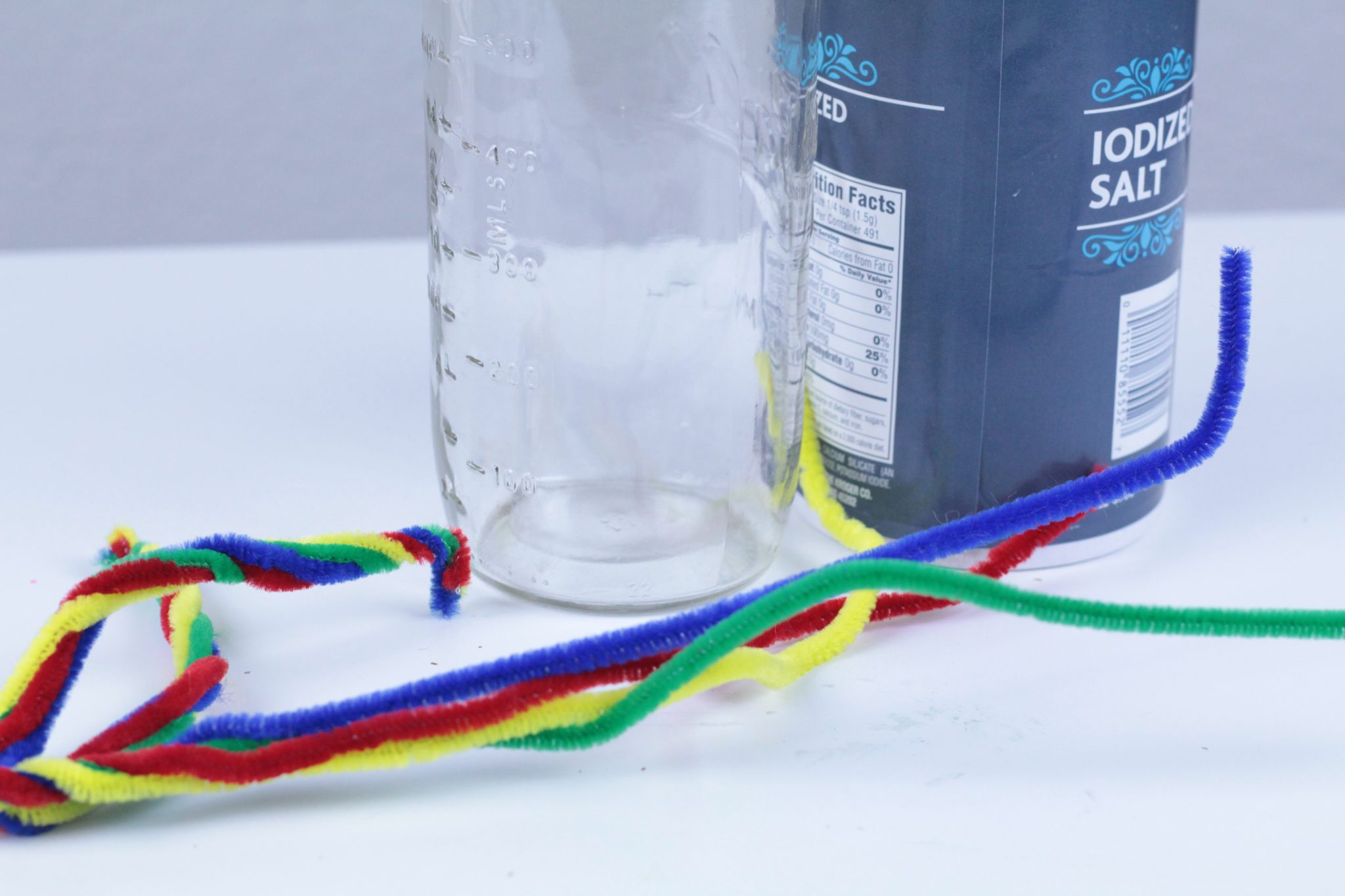
- Salt
- Stove or hot plate
- Jars
- Pipe cleaners in red, yellow, green, and blue
- Water
You won’t have to spend any time in advance prepping for this activity.
Doing the Salt Crystal Rainbow Science for Kids
Heat your water until boiling. You’ll have to do this part, but the children can observe.
Once the water is hot, add salt to the mixture. Keep adding salt until a sheet of crystallized salt forms on the surface of the water.
Carefully pour the water into the jars and set aside.
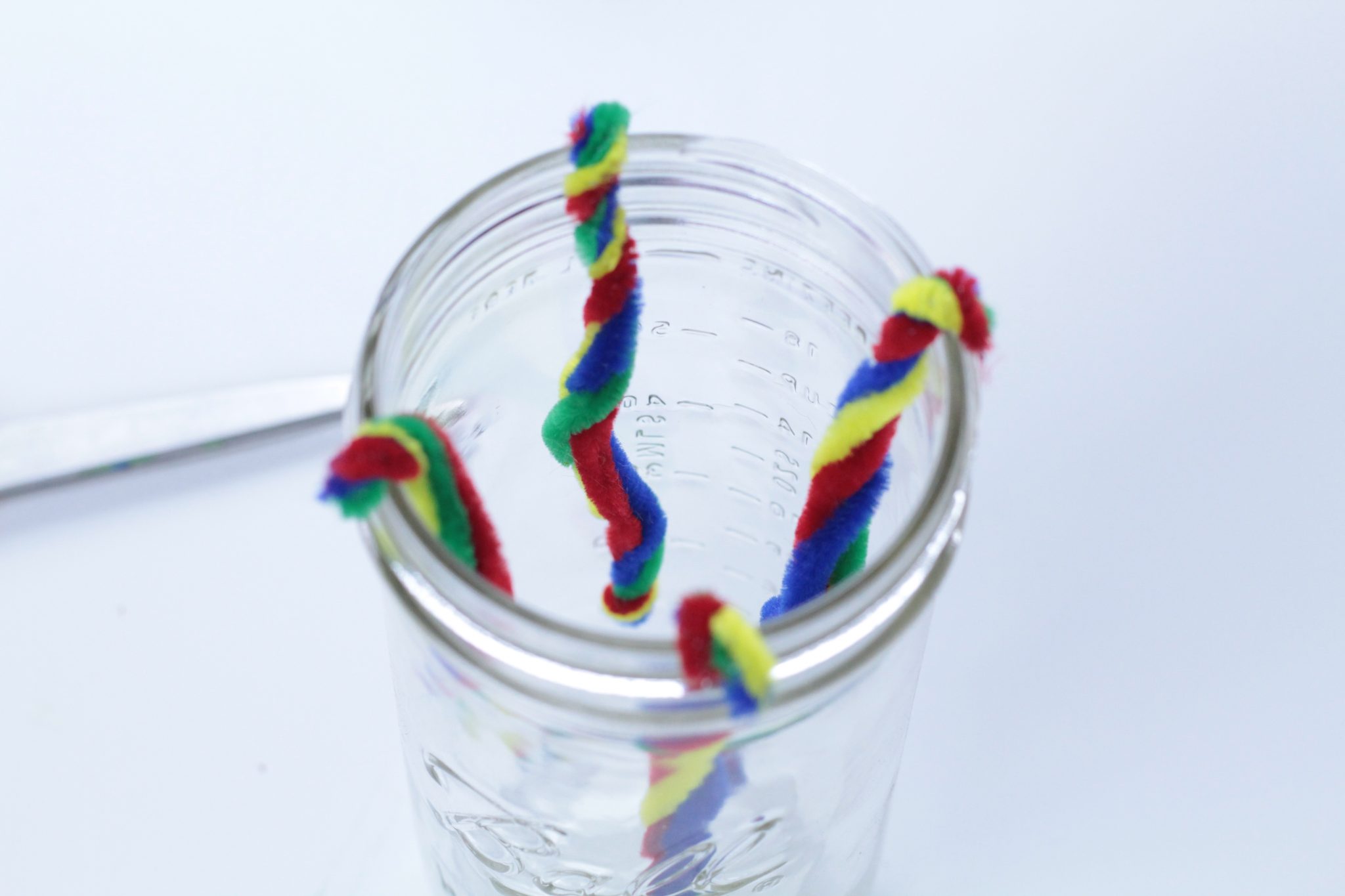
While the water is cooling, have the kids twist their pipe cleaners into rainbow sticks.
Once the water is cool to the touch, kids can lower their sticks into the jars.
Put the jars in a sunny location and let them sit for 2 days to a week. Crystals will start forming after a few hours.
When the crystals are formed, pull the sticks out of the water and let dry.
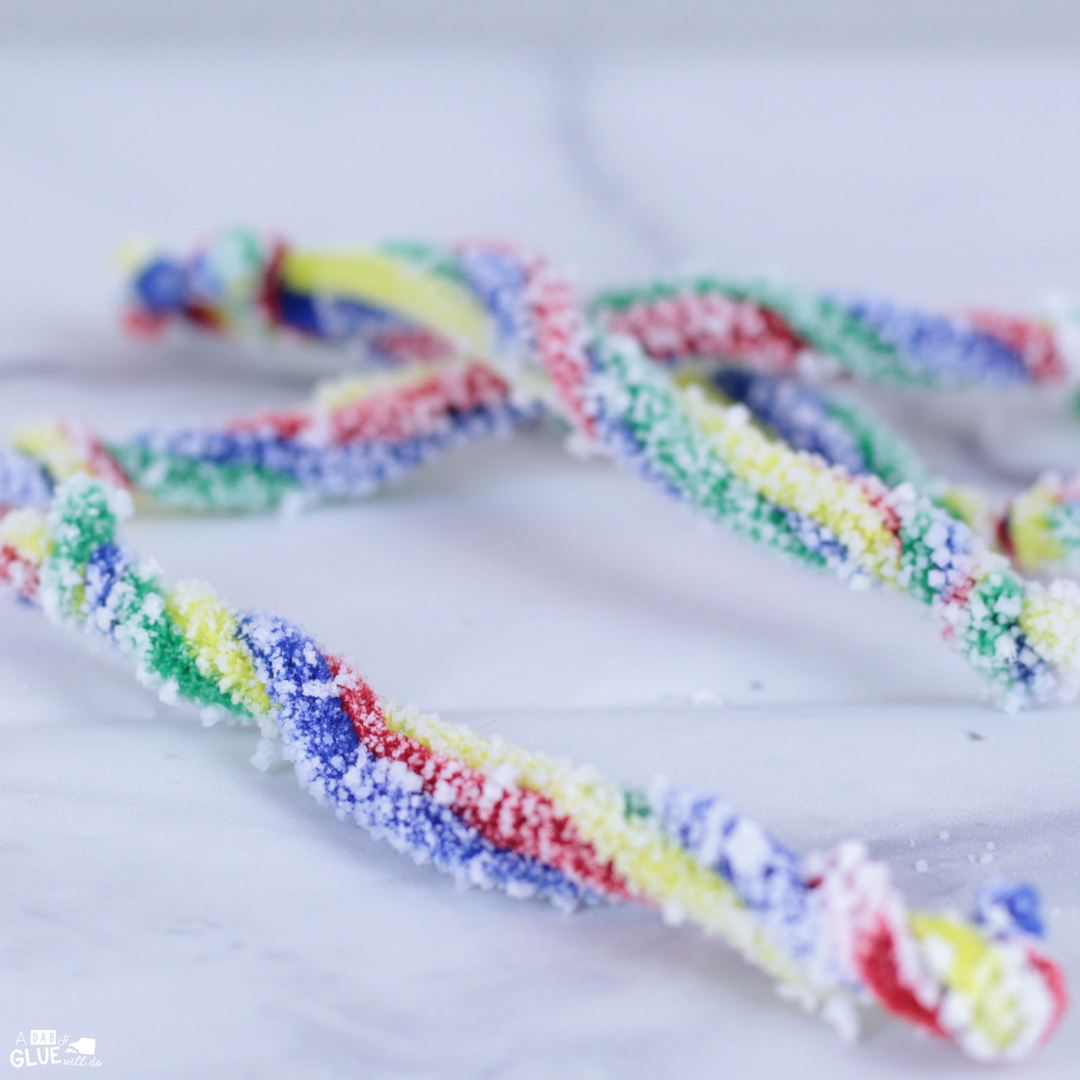
Observe the crystals with a magnifying glass and have students write their results in a science notebook.
The Science Behind the Salt Crystal Rainbow Science for Kids
Salt crystals are formed when the water in the saltwater solution evaporates. When this happens, the water becomes supersaturated, and the salt separates from the water. The salt clings to the fur on the pipe cleaners, making crystals! Salt crystals are an example of ionic bonding. The molecules in the salt crystals adhere to a strict bonding pattern so that when you look at them under a magnifying glass or microscope, they are always square or rectangle! There will never be rounded edges on a salt crystal due to its specific ionic bonding pattern.
More Science Activities and Ideas
Walking Water Science for Kids
Want science planned for you ALL YEAR LONG?!
Do you want science planned for the ENTIRE CALENDAR YEAR!? This Endless Science Mega Bundle will save you so much time and keep your students engaged and excited about learning. This amazing resource contains 53 science topics including life science, physical science, earth science, and animal studies.

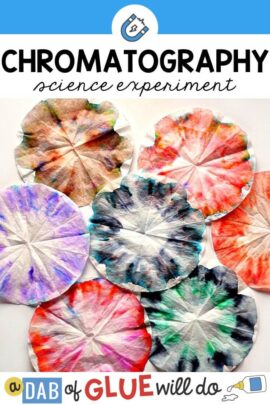
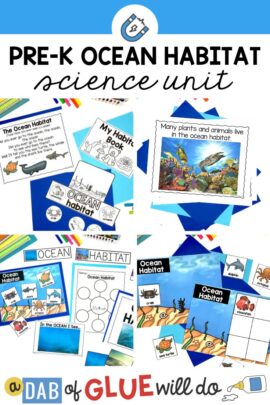
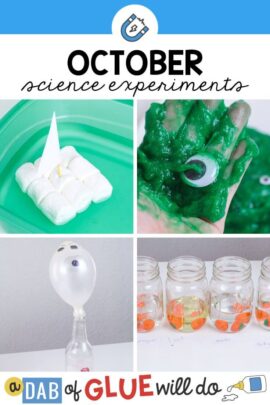
I was not able to locate for download the science worksheet for the Salt Crystal Rainbow experiment.
Hi there Crystal, I’m so sorry it says there is a download. Unfortunately, for this experiment, I do not have one made. Thank you for your understanding.
I genuinely prize your work, Great post.
As soon as I observed this internet site I went on reddit to share some of the love with them.